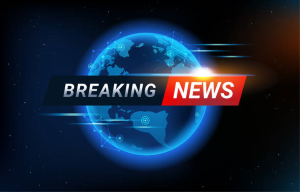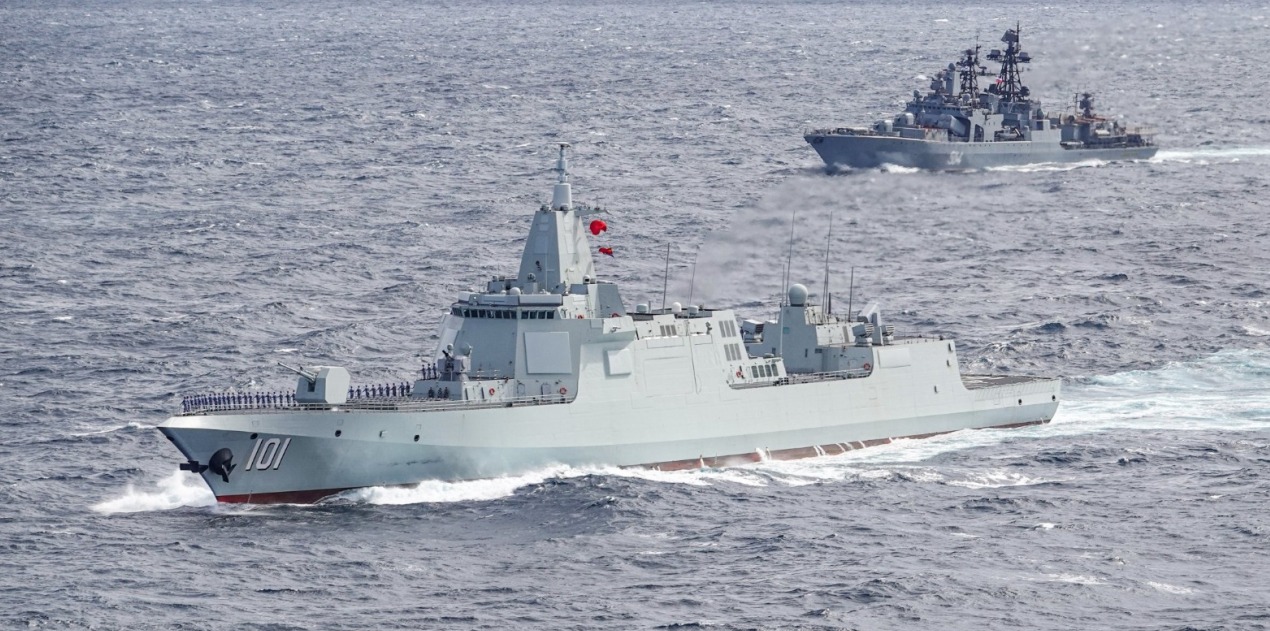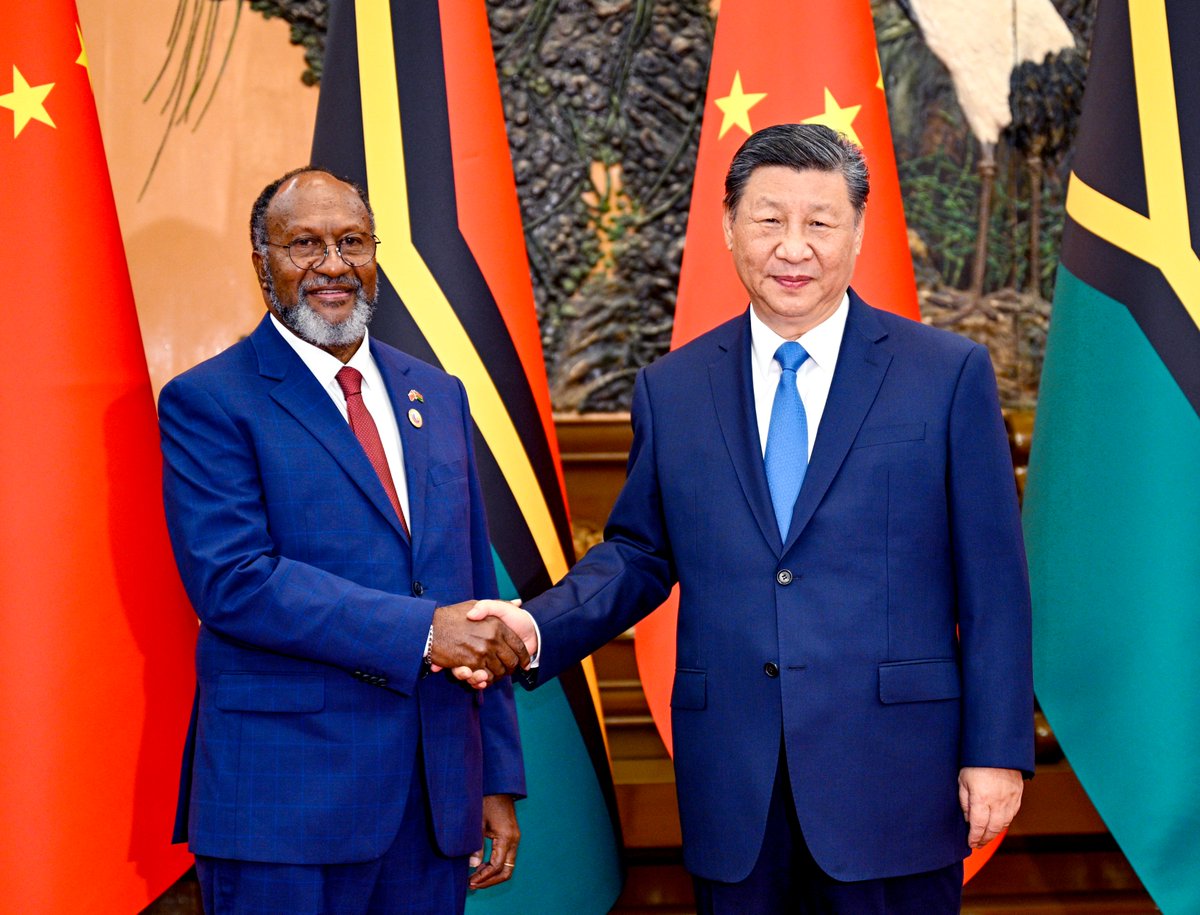3700 KM Away From Australia, Why Chinese Naval Activity Is Giving Sleepless Nights To Both Canberra & Washington?

China is marching into the Pacific Island Countries (PIC) despite stiff opposition from Australia and the United States, as recently demonstrated by vivid images of People’s Liberation Army Navy (PLAN) vessels docking at a port in Vanuatu for the first time.
The newest Type 055 Guided Missile Destroyer, ‘Xianyang’ (108), docked at Port Vila in Vanuatu on October 21. The destroyer berthed next to the Type 052DL, Nanning (162), which is believed to have arrived at the port one day ago, on October 20.
Images of the Chinese vessels at Port Vila have been published on social media.
According to reports, Xianyang’s presence in Port Vila marks the first known deployment of a Type 055 Destroyer in the South Pacific, even though smaller PLAN Type 052D destroyers, Type 054 frigates, and amphibious warships have become fairly regular visitors to the region in recent times.
The Chinese Embassy in Port Vila told Pacific Defense Monitor, “The Chinese naval vessels have arrived in Port Vila with the prior approval and acceptance of Vanuatu’s government. The purpose of this technical stop is to make fuel, water, and food supply and the rest of crew.” The report or the Chinese statement did not mention where the warships would be headed from Vanuatu.
The images of Chinese ships at Vanuatu set social media abuzz, with military watchers and analysts highlighting that the first deployment of the Type 055 destroyer to the region may be the start of Beijing’s much-talked-about military expansion.
A Pacific and China military watcher, Professor Anne-Marie Brady FRSNZ, wrote on X: “China is engaging in a new military show of force in the South Pacific, sending PLAN destroyer and cruiser to Port Vila.”
The Type 055 large destroyer docking at Vanuatu has become a major talking point among experts because it is a massive platform that can carry a lot of equipment and stay at sea for extended periods. The warship’s integrated radio frequency system, 130-millimeter naval gun, huge missile-carrying capacity, and anti-submarine weapons system provide outstanding all-around fighting capability.
Dr. Malcolm Davis, a senior analyst at the Australian Strategic Policy Institute (ASPI), asked on X: “I wonder how often #China‘s PLAN will visit Vanuatu – or the Solomon Islands? And how long until those visits become a bit more like ‘operating from a Chinese naval base…?”
AfriPrime App link: FREE to download...
However, some other experts highlighted that Vanuatu routinely welcomes foreign vessels, including those from the United States, Australia, and New Zealand.
“Even if people have heard about Vanuatu before, very few seem to be aware of the fact that Vila routinely hosts foreign warships, including yes, those by the USN, US Army (you read that right), RNZN, and RAN. None of these services have “naval bases” there,” Naval expert Alex Luck wrote on X.
Nonetheless, this development comes amid concerns that China is negotiating security deals with Pacific Island Countries—a red line for Australia and the US, which have traditionally wielded influence and dominance over the region.
A report in Fairfax Media in 2018 stated that “China had approached Vanuatu” about setting up a “permanent military presence.” While China had not made an official proposal, the possibility of such a move was being explored in Australia and the US. The Vanuatu government vehemently denied the report at the time and emphasized that it was not interested in hosting foreign military bases.
Vanuatu has close ties with China. Earlier this year, China constructed and handed over the Presidential Palace to the Vanuatu government, followed by a visit from Vanuatu Prime Minister Charlot Salwai to Beijing. Notably, China has been instrumental in building infrastructure in a poverty-stricken country that experiences frequent economic shocks due to natural disasters.
Vanuatu is located just 2,247 miles, or 3,617 kilometers, from Australia. This essentially means that a Chinese military base coming at this PIC would position Chinese warships and submarines at Canberra’s doorstep and put it in China’s firing line.
Vanuatu is very strategically located in the Pacific Ocean. During World War II, one of the biggest military installations in the Pacific theater was located in Luganville, on the island of Espiritu Santo in Vanuatu. It has long been believed that whoever controls this island state controls the air and sea lanes connecting the US with Australia.
Hospital Management Platform SaaS.. Hospital and Patients management system perfect for all medicals.
Partnership/Agent Needed. Earn As You Go on monthly basis.
Contact Admin: admin@healthdata101.com
+++++++++++++++++++++++++++++++++++++++++++++++++++++
Since Australia is a close US ally expected to aid US forces in a potential conflict scenario between the US and China in the Indo-Pacific, a Chinese military presence near Australia may be non-negotiable. China could use Vanuatu as a deployment and refueling hub to deny US forces the ability to project power by threatening their logistical supply lines.
Australia takes a strong exception to the Chinese military presence in the region. As the Lowy Institute previously put it: “Distance is the country’s single biggest defense asset. Australia is hard to attack because it is far away from potential adversaries. Anything which reduces that distance – and a Pacific base could bring Chinese military power to within 2000 kilometers of Australia’s east coast – is bad news.”
Earlier, the Chinese government signed a security agreement with another PIC—the Solomon Islands—sparking concerns about a PLAN naval base coming up in the region.
While the government of Solomon Islands has reassured the international community against such concerns, China has continued to expand its influence in the South Pacific region by making inroads into PICs.
Currently, PICs like Kiribati islands, Tonga, and Vanuatu are being closely watched for their dealings with China.
China’s Entry Into Southern Pacific
Beijing’s interest in the Pacific Islands region has increased dramatically since President Xi took office in 2013. China has largely concentrated its efforts on deepening its commercial connections with the Pacific Islands, but it has also stepped up its diplomatic and security presence in the region in the last few years.
China lobbied with the ten Pacific Island Countries to sign a regional cooperation agreement with PICs in 2022 that reportedly covered policing, security, and data communication. The agreement, however, did not go through despite Beijing’s reassurances to the PICs.

Nonetheless, major Chinese-funded projects have been undertaken in nearly all Pacific Island nations in recent years, concomitant with the enlargement of China’s security and law enforcement agreements in the region and the bolstering of diplomatic relations.
China has been making concerted efforts to court the PICs. In 2022, for instance, the Chinese Foreign Minister began a tour of the PICs to expand diplomatic relationships. In the course of his 10-day tour, Chinese Foreign Minister Wang Yi visited Samoa, Fiji, Vanuatu, Kiribati, Tonga, Papua New Guinea, and East Timor.
According to the Lowy Institute’s Aid Map, China’s aid spending in the Pacific accounts for just 9% of all development spending in the region, a small amount compared to other nations. However, it has been playing catch-up as it seeks to dislodge the current status quo, which allows Australia to wield the most influence in the region.
According to a Reuters review (2018) of the financial books of 11 South Pacific island governments, China’s lending initiatives have increased from near nil to over $1.3 billion in the last decade. Reports suggest that Tonga, Vanuatu, and Samoa are currently spending some of the largest percentages of their GDP on debt repayment to China.
Military analysts have expressed concern that China could leverage its economic aid, infrastructure development, and loans often readily provided to establish military facilities in the region. These economically weak countries frequently fail to repay their debts and are often forced to overturn their territory to host Chinese military assets for defaulting on loans.
AfriPrime App link: FREE to download...
- Questions and Answers
- Opinion
- Story/Motivational/Inspiring
- Technology
- Art
- Causes
- Crafts
- Dance
- Drinks
- Film/Movie
- Fitness
- Food
- Giochi
- Gardening
- Health
- Home
- Literature
- Music
- Networking
- Altre informazioni
- Party
- Religion
- Shopping
- Sports
- Theater
- Wellness
- News
- Culture
- War machines and policy



